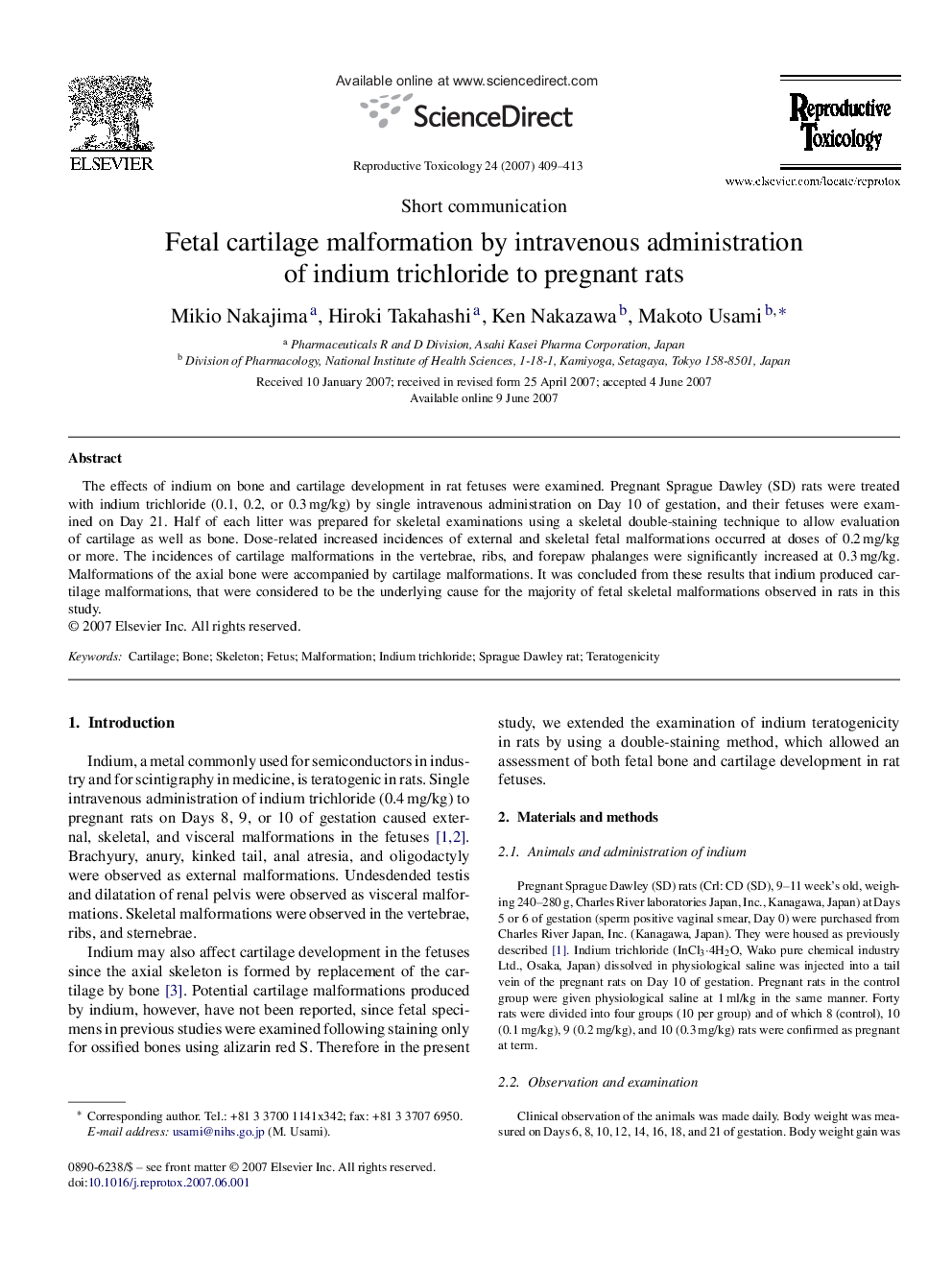| Article ID | Journal | Published Year | Pages | File Type |
|---|---|---|---|---|
| 2595237 | Reproductive Toxicology | 2007 | 5 Pages |
The effects of indium on bone and cartilage development in rat fetuses were examined. Pregnant Sprague Dawley (SD) rats were treated with indium trichloride (0.1, 0.2, or 0.3 mg/kg) by single intravenous administration on Day 10 of gestation, and their fetuses were examined on Day 21. Half of each litter was prepared for skeletal examinations using a skeletal double-staining technique to allow evaluation of cartilage as well as bone. Dose-related increased incidences of external and skeletal fetal malformations occurred at doses of 0.2 mg/kg or more. The incidences of cartilage malformations in the vertebrae, ribs, and forepaw phalanges were significantly increased at 0.3 mg/kg. Malformations of the axial bone were accompanied by cartilage malformations. It was concluded from these results that indium produced cartilage malformations, that were considered to be the underlying cause for the majority of fetal skeletal malformations observed in rats in this study.
